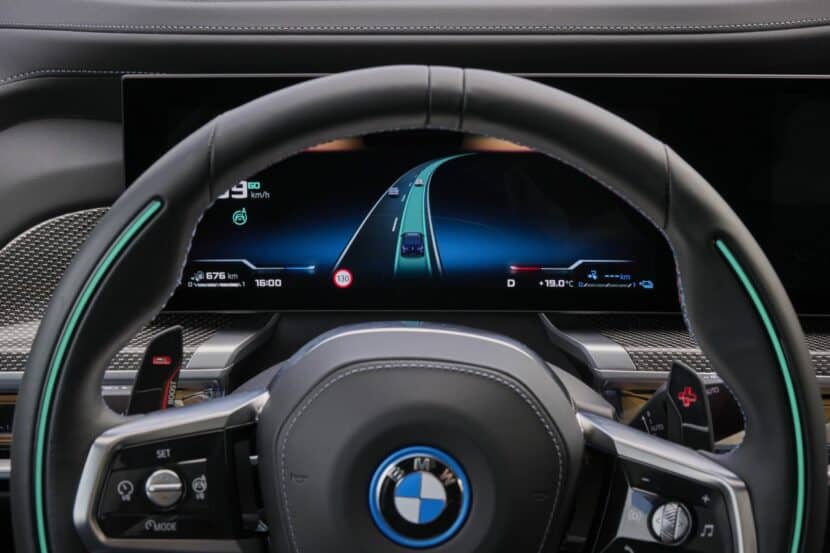The automotive industry is in a bit of a scramble to find autonomous driving solutions these days. BMW is no exception, bringing steady improvements to their original adaptive cruise control system brought to market in 2000. Since then, we’ve seen Adaptive Cruise Control with Stop & Go in 2007, the addition of a Traffic Jam Assistant in 2013, and many more iterations and additions that help make the least demanding driving situations a little more convenient.
Over two decades later, BMW is closer than ever to fully-autonomous driving scenarios. A Level 3 autonomous driving system will debut on the 7 Series in either late 2023 or early 2024. What does it mean? Well, Level 3 autonomy means you are – according to SAE regulations – not technically driving the vehicle. That is, unless the vehicle requests your intervention. Level 2 to Level 3 is one of the most significant leaps on the self-driving spectrum, shifting responsibility to OEMs rather than the owner. This is what that leap forward looks like for BMW.
Requirements for BMW Level 3 Autonomous Driving
Level 3 autonomy starts out very similar to the Level 2 systems you might be familiar with. A sensor in the cabin monitors the driver’s seating position, eyes, and head to ensure they are present. You must have your seatbelt on, and the camera must be able to see which way your head is turned. While the system is legally limited to 130 km/h (80 mph) in Germany, the current test vehicles are limited to 60 km/h (37 mph) as testing continues. Only suitable roads – currently, highways – with suitable traffic conditions will be able to use Level 3 autonomy.
How BMW Level 3 Autonomous Driving Works
Like Level 2 autonomy, all BMW’s Level 3 system really asks of you is to press a few buttons when you’re cruising in a zone where the system is allowed to be active. In testing, touching the pedals reassumes vehicle control, but BMW aims to change that. Ideally, only after touching the kick-down switch at the end of the pedal will the vehicle turn over control to its driver. Speed is controlled by the speed limit of the road, traffic, and the system’s limitations (i.e., currently 60 km/h). When active, turquoise lights on the steering wheel indicate that the system is live. BMW used this unique blue shade to separate it from Level 2 systems, which use green.
The cool stuff comes from the hardware that sets the Level 3 autonomous driving apart from the Level 2 stuff. Lidar and additional sensors constantly scan for obstacles. They’re part of the reason that you can look out the window, stream a movie, check your phone – whatever you want – while the Level 3 system is engaged. The vehicle accounts for everything from merging traffic to objects falling off trucks and everything in between.
Prompting the driver isn’t difficult, either. There are three primary forms of notification: optical, digital, and, well, physical. First, the lights on the steering wheel will begin to blink, as they do with the current Level 2 systems. After yellow and then red lights, on-screen notifications attempt to inform the driver. Keep ignoring them, and you’ll be on the receiving end of some well-timed brake checks, and eventually, the vehicle will come to a full stop if it can’t figure out why the driver is ignoring it.
Testing Level 3 Autonomous Driving
Not sure how safe this newfangled tech is? You’re likely not alone. But it might help to know that BMW has set up its own testing track dubbed the Autonomous Driving Highway, or ADH, in Sokolov, the Czech Republic. A 6.2-kilometer stretch of road dedicated to introducing and testing Level 3 tech, it’s chocked full of obstacles and other moving vehicles to simulate life in the real world. Of course, BMW harvests and analyzes every bit of data from these autonomous tests. Combined with the in-car data and real-time human observations (“classic testing”), all of this information is scrutinized to decide whether or not the system is operating as intended.
Challenges Developing Level 3 Driving and What the Future Looks Like
Speaking with some of the engineers on the project, the biggest hurdles were somewhat predictable. Legislature, which varies wildly from country to country (and even state to state in the US), is hard to predict and tougher to work around. Secondly, highways vary pretty significantly in different regions. Different surfaces, signage, and boundary markers are inconsistencies that the system needs to keep up with.
BMW says the system should be ready for production by the end of 2023 or the beginning of 2024. It will debut on the current 7 Series and won’t be offered as an over-the-air update. BMW says too many additional sensors and failsafe systems are required. City self-drive options are still a long way off, though. With numerous additional variables like traffic signals and pedestrians, BMW thinks it’s a drastic technical step forward. Look for more information as the second half of the year unfolds.





